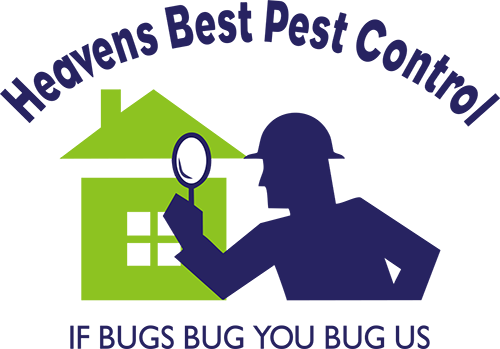Photography, Copyright, & Fair Use – What You Need To Know

The Internet is a veritable treasure trove of media, both free and protected. From high-quality images of bananas to low-quality videos of the latest viral challenge, nothing seems sacred. With the courts continually muddled up with cases, they have trouble defining copyright infringements and theft of ideas. It’s hard to discern what exactly constitutes any kind of ownership over virtual media.
No matter the medium, copyright laws exist to promote art and science by securing the ideas of those that have them. They provide an incentive for the ongoing pursuit of such concentrations. The ideal world would be one with a fair balance of rights belonging to the creator and those of the public.
More commonly, the public receives far more support. In terms of image use online, the best information you can arm yourself with is that of not only basic copyright law. Also, how to properly use such images in a way that respects the creator while taking advantage of fair use laws.
Copyright
Creation
When you set out to produce your own work, art, or music, some form of copyright automatically protects it. This does not mean your idea is protected, though. Instead, you must have actually produced something for the law to come into effect. Simply telling the judge you had the same idea, as the individual that actually created it does not stand in court.
No Paperwork Necessary
Copyright, surprisingly enough, does not require you to fill out 50 pages of paperwork to secure your work. That enjoyable process only envelops trademarks and patents. You can register it to add a bit more protection. Under current law, anyone that creates something can legally immediately slap on the copyright symbol.
Copyright Rights
As with most laws, this protection comes with stipulations that give power to the owner that others do not have. This includes the ability to reproduce the work, display it publicly, create works based on the piece, and distribute copies for monetary gain, including sale and rental. This is an important part of the law to note. It lists the abilities that cannot be overstepped when wanting to post an image that avoids copyright infringement.
Exceptions
All of this is wonderful news for the starving artist. Yet, there are exceptions to keep in mind. This law does not protect words, short phrases, slogans, blank forms, reproductions, and government works. In today’s world of titillating titles and fantastic photos, authors and publishers alike understand the absolute necessity of utilizing visual media to garner page views.
Advertising companies try their hardest to come up with ads so visually enticing that people cannot do anything but click on the quiz. With this online culture and business set up, comes the need for images by individuals that do not have any idea how to operate a camera or a paintbrush. This leaves them to turn to the internet for its vast selection of available content.
The general rule is that you cannot use copyright material without the permission of the owner. This gets muddy. What about sharing images through Twitter or Facebook? Is that the chink in the armor, so to speak? This territory falls under the term “Fair Use.”
Fair Use
This is the legal loophole in copyright law. Fair does not equal free. However, it is the exception to the rule by providing the public with a means to use the work without asking. It legally gives limited and reasonable use of the work. As long as it doesn’t interfere with the owner’s rights and their legal right to handle the work at their discretion.
An example of this is a product review. Because it is in the interest of the public, reviewers can legally take the high-quality images made by the owner and post them to a blog. Since it does not impede on the object itself and does not prevent the creator from doing anything with the product, it is not in violation of copyright.
When the use of an image is contested as illegal, four issues are taken into consideration. First, the purpose and character of the image’s use are determined. For instance, was it an image of a bird for a non-profit nature site or for a for-profit art gallery?
Secondly, the nature of the work is examined. Third, the amount of work in question used is considered. Finally, its effect on the work’s potential market and its value are calculated. Altogether, the first piece is the absolute most important.
It determines if the court even needs to pursue analyzing the remaining three factors. As far as pictures are concerned, laws generally protect the first release of an image. Once out there, the laws tip in favor of the public.
Photos also run into issues regarding the third factor. Literature can be quoted. Songs can be diced into clips. Images are rarely, if ever, not entirely used.
This means that if you turn to copyrighted images, you generally use the entire work, not just a section. This makes it absolutely imperative that you really key into questions you need to ask yourself before publishing any copyrighted pictures.
The Big 5
1. Do you really understand fair use?
Remember, fair use uses someone’s work in a way that does not impede on their rights as protected by law. Even if you cite them as the creator, it is not fair use. It is what is known as plagiarism. It follows an entirely different set of laws and regulations.
2. If things go terribly, can you afford it?
On top of the possibility of other legal consequences like a lawsuit, you need to make sure if that event does occur, you have a strong case in court. Justify why your publication of the image falls under fair use. Whether you win or lose, the expenses incurred may not make it using the image worth it.
3. Why are you using it?
If your answer is to decorate your site or help sell your own products, go refresh your understanding of fair use. To use an image legally without offending copyright, it needs to educate the audience or criticize something. Basically, as long as it is used for some altruistic purpose, it is fair to use.
4. Is the image cropped in any way?
Maybe you only publish a section of an image. Similar to the purpose behind using the image, it should be cropped in a way that amplifies the text. If you write about how to grill a steak and crop out a steak from a barbeque panorama, your chances of successfully arguing fair use increase dramatically.
5. Is the image altered in any way?
If you take the picture and alter it so much that it hardly resembles the original work, it begins to push into the territory of it being its own, new image. Thereby, increasing the chance that you do not break any laws. If it is put in a border or given a sepia tone to fit a presentation, it’s time to consider what the presentation is for and how the image relates. Then, reread the fair use laws.
To Conclude
Copyright rules are doing their best to catch up with the modern era. Instated at a time by people that could have no possible concept of the future of data sharing and exposure. Courts today work hard to establish guidelines that define the original laws with the language of today.
Always Play it Safe!
While you can interpret the laws for yourself, get permission directly from the creator. If not possible, seek legal counsel in regard to an images’ use. If anything is off and the owner of the copyright disagrees with what you did, your entire site can be shut down in addition to paying untold legal fees.
Also, don’t just assume the bigger companies care less. In fact, with so many resources, they have entire teams dedicated to finding their images used in infringing ways. Even if you crop, alter, or change the file name. With so much power, they can track down everything. They charge fines of over $25,000 for misuse.
Though absolutely horrifying for smaller blogs and companies that barely earn enough to keep going, there is a ray of light. Free services, such as public domain and creative commons, provide images at no cost. There are even super-cheap stock photo sites that can fit any budget.
As stated before, if you are really into an image, simply email the creator and ask. You’ll find that most of them are decent human beings. They are more than happy to share their work.
Fair Does Not Equal Free
Although, it does allow the public some wiggle room to display images in a way that benefits society. It still is designed to protect against the use of someone else’s creation to increase another’s monetary gain whether from page clicks or ad revenue.
Follow these basic guidelines and there should be no issues. As with many things in life, it is much better to be safe than sorry in an arena that could end up costing you more than you could ever manage to pay back.
———————————————
Links Web Design is a Website Design Company in Bangor, Maine.









